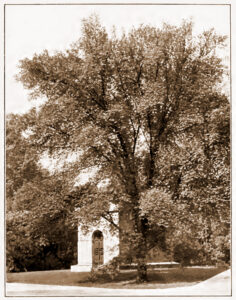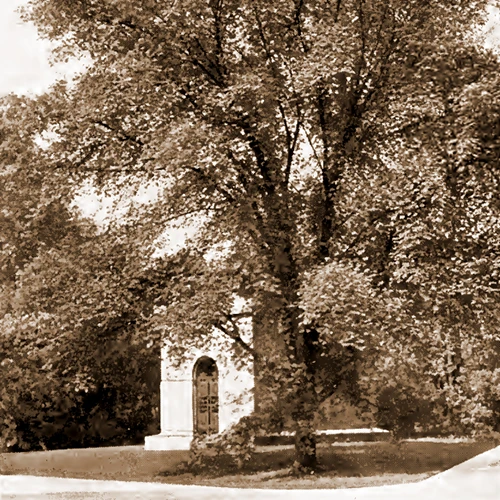O. C. Simonds (1855-1931) was a landscape designer working in the late nineteenth century into the early twentieth century. He preferred the term landscape “gardener” and was sensitive to the beauty of both small and large spaces, using native plants and trees and vast skies to orchestrate his creations.

Some of his well-known garden designs are Graceland Cemetery, Chicago, IL, the Morton Arboretum, Lisle, IL, Fort Sheridan, IL, the Brucemore estate, Cedar Rapids, IA, and hundreds of other commissions consisting of private estates, golf courses, cemeteries, arboretums, public parks, subdivisions, and schools. Charles and Esta Barrett were perhaps acquainted with Simonds through his work in the Rock River valley and engaged him in the creation of their Rockford estate.
Beyond the landscape, Simonds was a talented civil engineer, receiving a degree at the University of Michigan, where he also studied architecture under William Le Baron Jenney. Simonds moved to Chicago and worked for Jenney, becoming familiar with both the Chicago skyscraper and the beauty of Graceland Cemetery, one of Jenney’s clients. Simonds left Jenney’s office to form a brief partnership in the firm of Holabird and Simonds, taking the Graceland commission with him. He gave up the partnership to focus his practice on landscape design and become the superintendent of Graceland, a place he would steward for decades.
Later, Simonds taught classes at the University of Michigan, was one of the founding members of the American Society of Landscape Architects, and was a prolific writer. In 1920, he published Landscape-Gardening to champion the use of native plants and discuss the beautification, management, and care of civic and private properties including parks, farms, and cemeteries. In his chapter on cemeteries, he explains his theory on good cemetery design, “It seems natural that one should seek for such a place the very best production of landscape-art, where spreading lawns give a cheerful sunny effect; where pleasing vistas show distant clouds or the setting sun; where branching trees give grateful shade (Fig. 58), furnish pleasing objects to look at, and places for birds to come each year and sing again their welcome songs; where blossoming shrubs delight the eye, perfume the air, and make attractive nesting places. Such features may seem to exist more for the living than for the dead, but the living are the ones that need them.”



